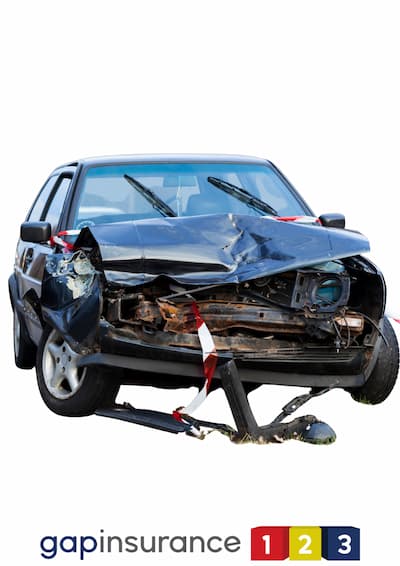Call Monday-Friday 9am - 6pm Closed Saturday & Sunday
Please select some policies.



Need Help? Calling from a mobile please call 0151 647 7556
0800 195 4926 / 0151 647 7556Do you have a question? or need help?
Call Monday-Friday 9am - 6pm Closed Saturday & Sunday,
The most that a Gap Insurance will pay depends on a number of factors. Two of these factors are the most important.

Firstly, the type of Gap Insurance you have will dictate exactly how much your Gap Insurance will pay. That is because the different types of Gap cover protect you in different ways.
The second major factor is if your Gap policy has a maximum claim limit.
There are a number of Gap Insurance products available in the UK today. Each can protect you in different, but specific ways.
Here we will outline the different Gap Insurance types and how the maximum they can pay out is calculated.
Which type of Guaranteed Asset Protection Gap do you have?
Lease & Contract Hire Gap Insurance (sometimes known as Finance Gap Insurance) is designed to cover any shortfall between your motor insurers settlement and the outstanding settlement, at the point the vehicle is written off, on your lease finance agreement.
It is often difficult to imagine what the difference between the market value of the vehicle (which is what your car insurance will settle if the vehicle is written off) and the outstanding finance or lease settlement.
Some people think there may not even be a 'gap' to fill, negating the need in buying Gap Insurance at all.
The terms and conditions of your contract hire lease will impact the potential shortfall that could occur. The maximum your lease could ask you for should be no more than 100% of your outstanding lease payments still remaining.
The maximum this type of Gap Insurance will pay is the shortfall between the motor insurers settlement at write off, and the outstanding lease settlement at that time.
Return to Invoice Gap Insurance (RTI) will pay the difference between the market value of your car at the time it is written off and the original invoice price you paid for the car.
This policy covers cars that have been bought outright, as well as HP or PCP financed vehicles.
The maximum payout under this type of Gap Insurance policy is usually between the motor insurers settlement, at point of loss, and 100% of the original invoice price you paid for the car.
Vehicle Replacement Gap Insurance (VRI) will pay out the difference between the market value of your car at the time it is written off and the cost of a the equivalent replacement vehicle to the one you first insured, at the time you bought it.
Confused? Let's give you a couple of examples.
If you buy a brand new vehicle and take VRI Gap Insurance out on it, then the 'equivalent replacement vehicle' is another brand new one at the time you make the claim.
If you buy a second hand vehicle, say a 1 year old example with 10,000 miles on the clock, then it would be the cost of the equivalent 1 year old, 10,000 mile example but at the time you claim.
The idea with VRI Gap Insurance is that the cost of the same standard of car could rise from the price you originally pay. This 'inflationary' element can be added to a VRI settlement, on top of the loss in value from what you first paid.
The maximum a VRI Gap Insurance policy can pay is the difference between the car insurance settlement, at point of loss, and the costs of the equivalent replacement vehicle to the one you first bought.

The claim limit on a Gap Insurance policy is also a factor in determining what is the most Gap Insurance will pay out.
The claim limit is simply the maximum that Gap Insurance cover will pay, even if the shortfall from the motor insurers settlement is more than the claim limit.
Confused again? Let's explain by way of an example again.
Lets say you buy a Return to Invoice Gap Insurance for a brand new car you buy for £35,000. Your RTI Gap Insurance is for 3 years, and you have a maximum claim limit of £15,000. This means you have up to £15,000 on top of the motor insurer settlement from your car insurance provider to bridge the gap back to the £35,000 you paid.
But what happens if the gap you need to bridge is more than £15,000? This could happen later on in the cover if the car has depreciated more than £15,000 from its new car purchase price.
Well if the car was now only worth £17,000 then you would need another £18,000 to get your £35,000 invoice price back. If your claim limit is £15,000 then you will only get £15,000 from the Gap Insurer in settlement. You could not claim the extra £3,000 from either your Gap cover or the car insurer.
Ensuring your claim limit is sufficient is not only important but can also be difficult.
To help with this situation you will find many Gap Insurance products do not ask you to select a claim limit at all. Providers such as GapInsurance123 provide an 'unlimited' claim limit in the vast majority of quotations.
Some providers will have a blanket claim limit level, especially on more expensive vehicles. For example, if the vehicle purchase price is over £50,000 then many Gap Insurance policies have a maximum claim limit of £50,000. Considering the Gap Insurance settlement is to add to the motor insurers market value settlement then a £50,000 maximum claim should be more than enough in most cases.
Where you think their is a shortfall between the motor insurance providers settlement and what the Gap Insurance should be covering you for, in most cases this will be down to you not selecting a sufficient claim limit to bridge the difference.
If you identify you need Gap Insurance in the first place, it may be worth ensuring your claim limit is suitable for any Gap Insurance claim.
Comprehensive Car Insurance should provide you with the current market value of the vehicle. Your Gap Insurance claim should cover the difference. This is unless you opted for an insufficient claim limit. When you buy Gap Insurance it is always worth checking what the claim limit is. If there isn't one then all the better!
So there you have it. The two main limiting factors that may impact your Gap Insurance claim are the claim limit on the Gap Insurance cover and the type of Gap Insurance you take in the first place.
Taking a little time when you first buy Gap Insurance, to ensure you have adequate cover means you could avoid a nasty shock with your Gap Insurance payout.
No, as explained above, there are factors that can mean Gap Insurance will not always cover the full amount you may think it does. This could be down to the type of Gap Insurance you have bought. It could be down to not having a sufficient claim limit.
Other factors can include any excess deduction on your settlement from your car insurance provider (above what may be covered with your Gap policy). A further one could be where you have underinsured, or not received a full market value settlement from your car insurance company.
One final example can be where you have carried negative equity from a previous finance agreement on to your new vehicle. Often this means your car finance settlement is higher than the value of the car.
Negative equity cover can be purchased as an optional extra from the Gap Insurer. Check your Gap Insurance quotes to see if this is available, if required.
Yes, Gap Insurance is designed to work if the car is stolen or written off AND you car insurer pays out the current market value at the time you claim.
That is how Gap Insurance works. Simple. Of course you must meet the eligibility criteria for the policy, and you should always check any significant exclusions before you buy any Guaranteed Asset Protection product.

We do get asked if the insured vehicle suffers damage that has a high cost to repair, like where an engine or gearbox blows up, would the Gap Insurance cover this?
The simple answer is no.
Gap Insurance is only able to be activated IF your vehicle is stolen or written off by your motor insurer following an accident, fire, flood or theft.
Where an engine or gearbox blows up, the cost of the repair may well be more than the value of the car. However, your car insurer would not normally write off a vehicle for mechanical failure. That is something you would need Mechanical Breakdown Insurance or a Vehicle Warranty for.
Many car insurance policies provide what is called new car replacement cover as one of the key features where the vehicle is brand new.
What this mean is, if your buy the car brand new and you are the first registered keeper, that if the car insurance settlement will be a brand new replacement car. This is in place of the market value, if the car is stolen or written off.
The replacement car is in lieu of a cash settlement.
So how does Gap Insurance work if you have new car replacement with your motor insurer?
Making a Gap claim requires you to have suffered a financial loss. In the event described above, your motor insurer provides you with a brand new replacement in settlement. You have not suffered a financial loss. Therefore there is no 'gap' to fill.
Normally if your motor insurer does replace your written off car with a new one, the remainder of your Gap cover can simply transfer on to your replacement car.
But in this scenario, do you even need Gap Insurance at all?
There are a couple of factors to consider.
Will you qualify for new car replacement cover with your motor insurance provider? - all motor insurance products will have terms and conditions. You must meet the criteria to get a new car. If not you may only get a market value settlement.
What about after the period of new car replacement ends? - most Gap Insurance products must be purchased within a set time frame of buying the vehicle. If you leave buying Gap Insurance until the end of your new car replacement cover with the car insurance then it may simply be too late.
The solution?
You have a couple of possible options.
The maximum a gap insurance policy will pay depends on many factors. The most important of which is the type of Gap Insurance you have and if your Gap Policy has a Maximum Claim Limit. In this post, we've covered two major factors to consider when deciding how much your car's replacement value may be worth with or without Gap Insurance coverage in place.
Hope it helps.